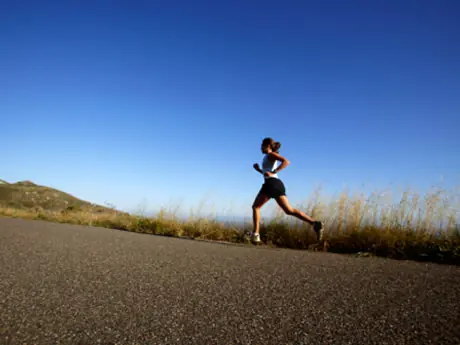Will Minimalist Running Make You Faster?
Elite runners have used minimalist footwear for years with great success. Track and field athletes use track spikes with little to no cushion. Racing flats are of the same mold and are nothing new to the road-racing scene. These minimalist shoes are lightweight and allow athletes to utilize a quicker turnover and thus a more economical stride; this is a good recipe for speed.
So it makes sense that wearing minimalist shoes more often can make you faster, right?
Dr. Allison Gruber, a post-doctoral fellow at the University of Massachusetts, conducted a study on oxygen and carbohydrate expenditure in runners who strike with their heels versus those who strike with their forefeet. Dr. Gruber found that a forefoot strike is not more economical than a rearfoot strike. Therefore, recreational runners competing in long-distance races have little performance benefits to gain from wearing minimalist shoes.
More: Can Running Technique Be Taught?
"I always recommend that runners run the way that is most natural and comfortable for them," Gruber told The New York Times. "Each runner runs a certain way for a reason, likely because of the way [he or she was] physically built. Unless there is some indication that you should change things, such as a repeated injury, don't mess with that plan."
Tribal Running
Take the Kenyans, for example. From birth, thousands of Africans walk, run and play sans shoes because they're too expensive or unavailable. The same can be said for the Tarahumara, who were popularized in Chris McDougall's Born to Run—the book that started the whole crazy barefoot running trend. While the book is fascinating and highly entertaining, it has misled many endurance athletes.
These tribal cultures can't afford shoes, which is why the Tarahumara have to make their own out of used tire tread. Add this to the fact that when the Kenyans win races on U.S. soil, they're wearing shoes. It's true that some of this has to do with Nike and sponsorships, which is where a lot of these men and women find their motivation to run as fast as they do. But it also must be said that running in Kenya or in remote regions of Mexico on dirt trails is much different that running a race on asphalt roads.
- 2
- of
- 3
About the Author
Get ACTIVE on the Go


Couch to 5K®
The best way to get new runners off the couch and across the finish line of their first 5K.
Available for iOS | Android







Discuss This Article